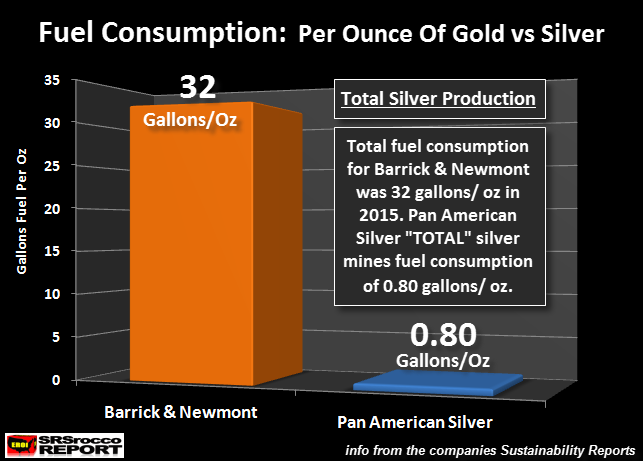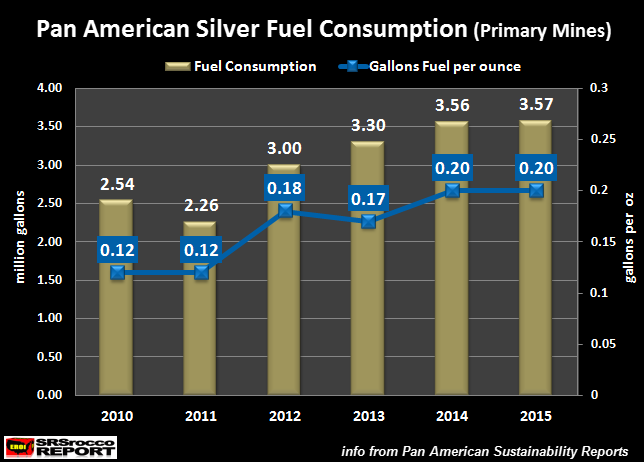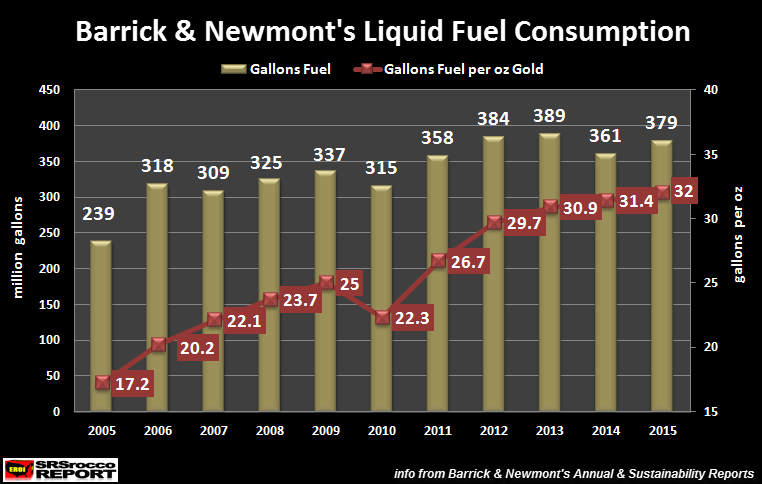According to my new research, there is a very important Gold-Silver ratio that every precious metals investor needs to know about. While most precious metals investors are familiar with the Gold-Silver price ratio of 68/1 (presently) as well as the Silver-Gold production ratio of nearly 9/1 (2015), they have no idea about an even more important ratio that I will explain below.
Before I get into this important Gold-Silver ratio, let’s quickly examine some of the historic ratios listed above.
The Historic Gold-Silver Price Ratio Briefly Explained
The Gold-Silver price ratio remained 15/1 (thereabouts) for centuries until it started to rise in 1874, due to the Coinage Act of 1873 that stated:
The Coinage Act of 1873 or Mint Act of 1873, 17 Stat. 424, was a general revision of the laws relating to the Mint of the United States. In abolishing the right of holders of silver bullion to have their metal struck into fully legal tender dollar coins, it ended bimetallism in the United States, placing the nation firmly on the gold standard. Because of this, the act became contentious in later years, and was denounced by people who wanted inflation as the “Crime of ’73” (Source: Wikipedia)
By removing silver as legal tender in 1873, this impacted the value of silver. There have been many conspiracy theories stating that the Coinage Act of 1873, which ended the bimetallism standard (gold & silver), destroyed the value of silver as money. However, congress passed a law called the Bland-Allison Act in 1878 that required the U.S. Treasury to purchase silver every month to make Silver Dollars:
The Bland–Allison Act, also referred to as the Grand Bland Plan of 1878, was an act of United States Congress requiring the U.S. Treasury to buy a certain amount of silver and put it into circulation as silver dollars. Though the bill was vetoed by President Rutherford B. Hayes, the Congress overrode Hayes’ veto on February 23, 1878 to enact the law (Source: Wikipedia).
Here we can see that Congress actually overrode President Rutherford Hayes veto of this bill. At that point in time in the history of the United States, Congress was not totally corrupted by the elite or corporations as they are today.
Again, there’s been a lot of conspiracy theories on the Crime of 1873 that I won’t get into. My opinion on the matter is still not decided, but the Gold-Silver price ratio continued to increase even after silver was reintroduced by the U.S. Treasury to coin Silver Dollars after 1878 and various denominations until 1965.
For example, the Gold-Silver price ratio continued to increase from 15/1 in 1873 to a high of 71/1 in 1931 (Source: U.S. Bureau of Mines 1932 Gold & Silver Yearbook). The rapidly increasing Gold-Silver ratio from 39/1 in 1929 to 71/1 in 1931 was due to the U.S. Great Depression.
Many precious metals investor believe the value of gold and silver should be tied to the actual Silver-Gold production ratio. While this made sense in the past, the current Gold-Silver price ratio is based on their COST of primary production rather than RATIO of production.
The Historic Silver-Gold Production Ratio Briefly Explained
According to the data put out by the U.S. Bureau of Mines in 1930 for world gold and silver production from 1493-1927, the average annual silver production in the 1700’s was roughly 18.3 million oz (Moz) versus 612,000 oz of gold. This was a Silver-Gold production ratio of 30/1. Basically, the world was producing 30 times more silver in the 1700’s than gold.
However, the Gold-Silver price ratio remained at 15/1 for that century. Now, in 1927 (the last year this report provided data), the world produced 251 Moz of silver and 19.4 Moz of gold. This turned out to be a Silver-Gold production ratio of 13/1 in 1927. However, the Gold-Silver price ratio had risen to 33/1 in 1927. Even though the world was producing more gold in respect to silver in 1927, the value of silver had declined from $1.29 an ounce in the 1700’s to $0.58 in 1927.
While there is evidence that the elite were manipulating the value of silver for centuries by the excellent work of Charles Savoie on his site, SilverStealers.net, another reason for the decline in value of silver versus gold was due to the falling cost to produce silver as coal and oil were substituted as the main energy sources compared to human and animal labor for the past 2,000+ years.
Currently, the world produced 887 Moz of silver and 101.5 Moz of gold in 2015. The Silver-Gold production ratio is now lower at 8.7/1 while the Gold-Silver price ratio of 74.1 was much higher in 2015 (the price of gold was $1,160 and silver $15.68 in 2015).
Again, the value of gold and silver have been valued based on a “Commodity Pricing Mechanism” (their cost of production), rather than their superior “Store of Wealth” properties. More on this in future articles.
The Important Gold-Silver Fuel Consumption Ratio Is Unknown By Most Investors
Because the quality of gold ore has declined over the century, the amount of energy consumed in its extraction has increased substantially. I have been documenting this in past articles on the rising fuel consumption by the top primary gold miners. However, I have not written many articles on how fuel consumption in the gold mining industry compares to the primary silver mining industry.
Well, here it is. According to the data put out by Barrick, Newmont and Pan American Silver in their Sustainability Reports, it took 32 gallons of fuel to produce an ounce of gold versus 0.20 gallons of fuel to produce an ounce of silver:

Thus, the Gold-Silver fuel consumption ratio shown in the chart above is 160/1. I arrived at that ratio by dividing Barrick and Newmont’s 32 gallons of fuel per oz of gold by Pan American Silver’s 0.20 gallons of fuel per oz of silver to get that 160/1 ratio.
This is a very important ratio to understand due to the upcoming collapse of U.S. and Global oil production. Basically, the mining of gold will be impacted much greater than silver due the massive amount of fuel that is needed to produce gold compared to silver.
I decided to use Pan American Silver as an example for the primary silver mining industry because Pan American Silver is one of the few companies that reports data in a Sustainability Report. That being said, I would imagine fuel consumption results would be similar in the overall primary silver mining industry. This would also be true for the gold mining industry as well.
Now, let me clarify that chart above. It only includes Pan American Silver’s primary silver producing mines. Even though Pan American Silver produced a total of 26 Moz in 2015, I only used their primary silver mines that produced 18.3 Moz that year. If I was to include their other lower grade silver and gold mines, this would be the result:

If we include ALL of Pan American Silver mines, the total fuel consumption would increase to 0.80 gallons per oz of silver produced. This would change the Gold-Silver fuel consumption ratio to 40/1… still high though.
For example, Pan American Silver’s Dolores Mine is an open-pit mine with low gold and silver ore grades. Of the total 11 million tonnes of ore Pan American Silver processed from its mines in 2015, the Dolores Mine accounted for 6.1 million tonnes, or 55% of the total.
This is why I removed the Dolores Mine from the calculation, because it is behaving more like a gold mine with by-product silver. I wanted to get a more representative figure for the primary silver mining industry. Pan American Silver’s primary silver mines produced 18.3 Moz while consuming 3.5 million gallons of fuel in 2015, for a fuel consumption of 0.20 gallons per ounce.
Here is the breakdown of Pan American Silver’s primary silver mines fuel consumption per ounce since 2010:

As we can see in the chart above, Pan American Silver’s primary silver mines fuel consumption per ounce of silver produced increased from 0.12 gallons per oz in 2010 to 0.20 gallons per ounce in 2015. Even though this is a 66% increase in fuel consumption per oz of silver produced since 2010, it is still quite small compared to the top two primary gold mining companies, Barrick and Newmont, 32 gallons per oz of gold produced.

The rising fuel consumption in both the gold and silver primary mining industry is due to falling ore grades. I just takes more fuel to remove lower quality ore at longer distances and elevations as underground and open-pit mines age and deepen.
The Gold-Silver fuel consumption ratio of 160/1 is a bad sign for the primary gold mining industry as available supplies of liquid fuels will diminish in the future. I believe primary silver mining will continue to take place on a larger percentage basis compared to gold in the future due to the relatively small amount of fuel consumed producing silver versus gold.
This Gold-Silver fuel consumption ratio needs to be understood by the precious metals investor as the world economic activity declines under falling liquid energy production. There are several impacts that need to be explored here. One is the possible falling value of gold mining stocks to a larger degree versus silver mining stocks in the future as companies such as Barrick will be producing a lot less gold as available fuel supplies contract.
I will be discussing this in more detail in future articles. However, this Gold-Silver fuel consumption ratio will be another important ratio for investors to consider going forward.
Check back for new articles and updates at the SRSrocco Report.


